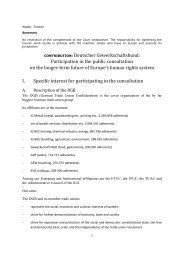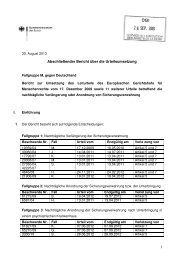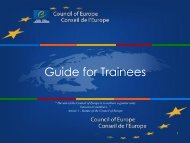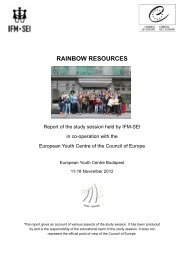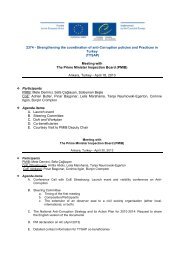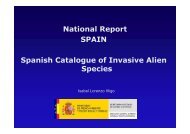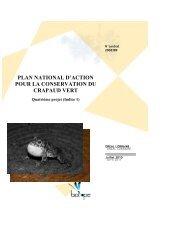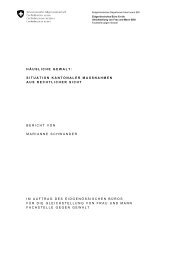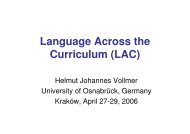Money laundering through money remittance ... - Council of Europe
Money laundering through money remittance ... - Council of Europe
Money laundering through money remittance ... - Council of Europe
You also want an ePaper? Increase the reach of your titles
YUMPU automatically turns print PDFs into web optimized ePapers that Google loves.
<strong>Money</strong> Laundering <strong>through</strong> <strong>Money</strong> Remittance and Currency Exchange Providers - 2010 <br />
100. Supervision – The level <strong>of</strong> vulnerability <strong>of</strong> the MR/CE sector to misuse for ML and TF was<br />
found to be rather high, with some countries indicating high levels <strong>of</strong> non compliance. There appeared<br />
to be in some cases a lack <strong>of</strong> understanding on the particular nature <strong>of</strong> the MR/CE sector that make it<br />
vulnerable to misuse for ML/TF purposes.<br />
101. Fit and proper – As described in Section II there is a risk in some instances that MR/CE<br />
operators or agents may be owned by criminals and that an adequate „fit and proper‟ test should rule<br />
out as effectively as possible. One possibility used in some countries is the regular registration renewal<br />
obligation. This has helped to detect attempts at controlling the businesses and/or agents.<br />
102. Agents – The monitoring <strong>of</strong> agents and sub-agents <strong>of</strong> MR/CE service providers appears to be<br />
lacking in some instances. Weakness in this area provides for a potential „loophole‟ whereby agents<br />
might operate at „arms length‟ on behalf <strong>of</strong> other CE service providers and/or are not subject to the<br />
„fit and proper‟ test. The role <strong>of</strong> smaller and local players should not be underestimated.<br />
103. Reporting systems – The implementation <strong>of</strong> reporting requirements, including the thresholdbased<br />
reporting system, appears to have contributed to detecting ML in the MR/CE sector. It is noted<br />
that in several responding countries, MR/CE service providers rank among the top five in numbers <strong>of</strong><br />
transactions reported as unusual or suspicious. In others, reporting in this area remains rather low,<br />
which may be explained by a variety <strong>of</strong> reasons (size <strong>of</strong> the sector, recent introduction <strong>of</strong> the reporting<br />
requirement, low understanding <strong>of</strong> the STR requirements).<br />
104. Law enforcement action – The number <strong>of</strong> referrals, prosecutions and convictions based on<br />
STRs received from the sector appears to differ greatly from one jurisdiction to another. However<br />
overall, a discrepancy can be noted between the number <strong>of</strong> referrals and the number <strong>of</strong> prosecutions.<br />
The information gathered indicated that the law enforcement in many jurisdictions is unable to gather<br />
sufficient information upon which to act, mostly due to incomplete or insufficient records, and in some<br />
cases falsified ones. Following the <strong>money</strong> trail and seizing assets are a <strong>of</strong>ten a real challenge, and it<br />
may be impractical to focus on the individual MR/CE transactions between customers, rather than on<br />
the elements and data that the operator needs to collect and provide to the law enforcement.<br />
© 2011 MONEYVAL and FATF/OECD - 39



